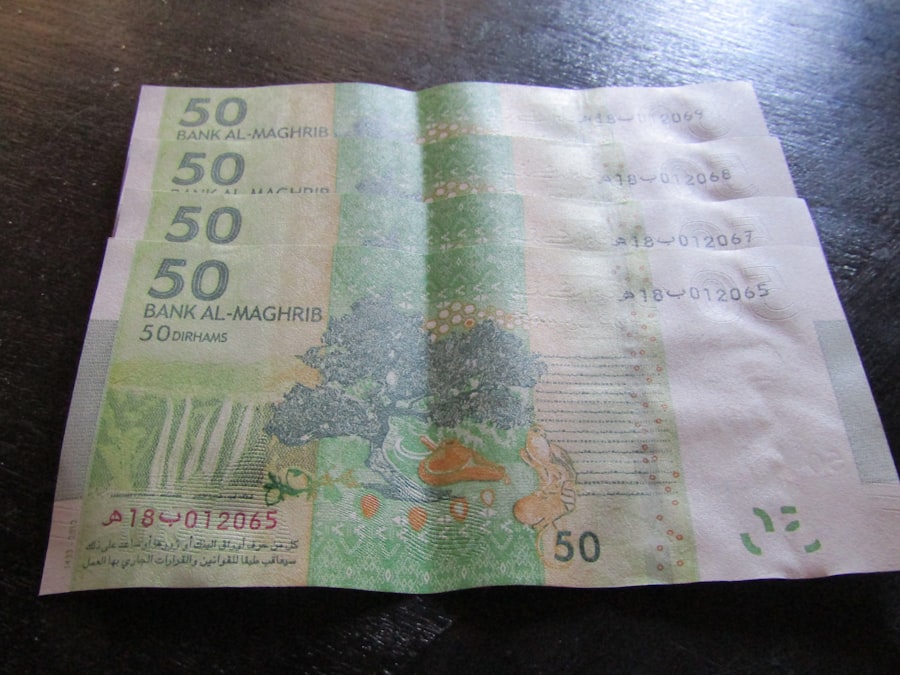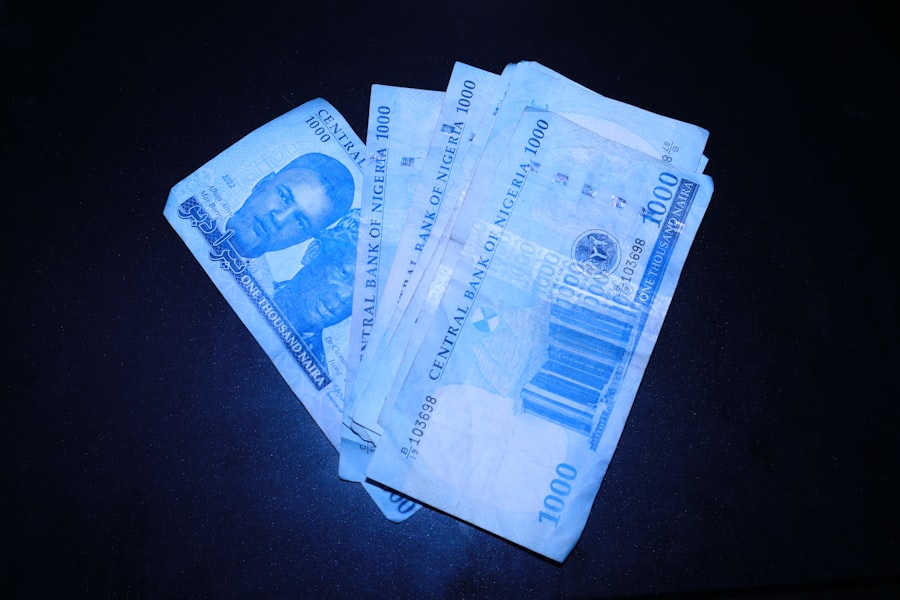Saddam Hussein paper money represents a unique intersection of history, politics, and numismatics. The currency, issued during the regime of the former Iraqi president, serves not only as a medium of exchange but also as a symbol of a tumultuous era in Middle Eastern history. Collectors and historians alike are drawn to these notes, which encapsulate the complexities of a nation under authoritarian rule.
The allure of Saddam Hussein’s currency lies in its ability to evoke memories of a time marked by conflict, oppression, and eventual liberation. The significance of this paper money extends beyond its face value. Each note tells a story, reflecting the socio-political climate of Iraq during the late 20th century.
As such, Saddam Hussein paper money has become a fascinating subject for collectors and historians who seek to understand the broader implications of currency as a tool of power and propaganda. This article delves into the historical background, design features, collector interest, and market value of Saddam Hussein paper money, providing a comprehensive overview of its enduring legacy.
Key Takeaways
- Saddam Hussein paper money is a unique and historical collectible that holds value in the collectors’ market.
- The design and features of Saddam Hussein paper money reflect the history and culture of Iraq during his regime.
- Collectors are interested in Saddam Hussein paper money due to its historical significance and rarity.
- The current value of Saddam Hussein paper money in the collectors’ market is influenced by factors such as condition, rarity, and demand.
- Authenticating Saddam Hussein paper money is important for collectors, and it can be bought and sold through reputable dealers and online platforms.
Historical Background of Saddam Hussein Paper Money
The issuance of Saddam Hussein paper money began in the 1970s, coinciding with the rise of his regime following the Ba’ath Party’s ascent to power in Iraq. Initially, the currency was designed to reflect national pride and the achievements of the Iraqi state. The notes featured images of Saddam Hussein himself, alongside symbols of Iraqi heritage and progress.
This was a deliberate attempt to cultivate a sense of nationalism among the populace while reinforcing the leader’s image as a benevolent figure. As Iraq became embroiled in various conflicts, including the Iran-Iraq War and the Gulf War, the currency evolved to reflect the changing political landscape. The notes were often used as tools for propaganda, with designs that emphasized military strength and economic resilience.
However, following the U.S.-led invasion in 2003, the Iraqi dinar underwent significant changes, leading to the withdrawal of Saddam-era currency from circulation. This marked a pivotal moment in Iraq’s history and left behind a legacy that continues to intrigue collectors today.
Design and Features of Saddam Hussein Paper Money

Saddam Hussein paper money is characterized by its distinctive designs and features that set it apart from other currencies.
These depictions were intended to project an image of strength and authority, reinforcing his status as the nation’s leader.
In addition to portraits of Saddam Hussein, the currency often includes motifs that celebrate Iraqi culture and history. For instance, some notes feature iconic landmarks such as the Ziggurat of Ur or representations of agricultural prosperity. The use of Arabic script is prominent throughout the designs, emphasizing the cultural identity of Iraq.
Collectors appreciate these aesthetic elements not only for their artistic value but also for their historical significance, as they encapsulate a specific period in Iraq’s narrative.
Collectors’ Interest in Saddam Hussein Paper Money
| Year | Number of Collectors | Price Range | Condition |
|---|---|---|---|
| 2010 | 500 | 10-50 | Good |
| 2015 | 800 | 20-100 | Very Good |
| 2020 | 1200 | 50-200 | Excellent |
The interest in Saddam Hussein paper money among collectors can be attributed to several factors. Firstly, the historical context surrounding these notes adds a layer of intrigue that appeals to numismatists and history enthusiasts alike. Collectors are often drawn to items that tell a story or represent a significant moment in time, and Saddam Hussein’s currency fits this criterion perfectly.
Moreover, the limited availability of these notes has contributed to their desirability. Following the fall of Saddam Hussein’s regime, many of these currencies were removed from circulation and destroyed or rendered obsolete. As a result, surviving examples have become increasingly rare, making them sought-after items in the collectors’ market.
The combination of historical significance and scarcity has led to a burgeoning interest in acquiring these unique pieces of currency.
Current Value of Saddam Hussein Paper Money in the Collectors’ Market
The current value of Saddam Hussein paper money varies significantly based on several factors, including condition, rarity, and demand among collectors. Generally speaking, notes in pristine condition or those with unique serial numbers tend to command higher prices. Some collectors have reported paying hundreds or even thousands of dollars for particularly rare specimens.
Market trends also play a crucial role in determining value. As interest in historical currencies continues to grow, so too does the potential for appreciation in value over time. Collectors often keep a close eye on auction results and sales data to gauge market fluctuations and make informed purchasing decisions.
Overall, while some notes may be relatively inexpensive, others can represent significant investments for those looking to build their collections.
Factors Affecting the Value of Saddam Hussein Paper Money

Several factors influence the value of Saddam Hussein paper money in the collectors’ market. One primary consideration is the condition of the notes; those that are well-preserved with minimal wear or damage are typically valued higher than those showing signs of age or handling. Additionally, specific features such as unique serial numbers or printing errors can enhance a note’s desirability among collectors.
Rarity is another critical factor affecting value. Certain denominations or variations may have been produced in limited quantities or may have been withdrawn from circulation more quickly than others. As a result, these rarer notes can fetch significantly higher prices at auction or through private sales.
Furthermore, market demand plays an essential role; as more collectors become interested in Saddam Hussein paper money, competition for available notes can drive prices upward.
Where to Buy and Sell Saddam Hussein Paper Money
For those interested in acquiring or selling Saddam Hussein paper money, there are several avenues available. Online marketplaces such as eBay and specialized numismatic websites provide platforms for buying and selling currency from around the world. These platforms often feature listings from individual sellers as well as established dealers who specialize in historical currencies.
In addition to online options, collectors may also find opportunities at coin shows or numismatic conventions where dealers gather to showcase their inventory. These events allow collectors to interact directly with sellers and examine notes in person before making purchases. Furthermore, local coin shops may carry Saddam Hussein paper money or be able to assist collectors in finding specific notes through their networks.
Tips for Authenticating Saddam Hussein Paper Money
Authenticating Saddam Hussein paper money is crucial for collectors looking to ensure they are purchasing genuine items rather than reproductions or counterfeit notes. One effective method is to examine the quality of the paper itself; authentic notes are typically printed on high-quality materials that feel distinct from lower-quality reproductions. Additionally, collectors should pay attention to printing techniques; genuine notes often exhibit intricate details that can be difficult to replicate accurately.
Another important aspect of authentication involves checking for security features embedded within the currency. Many Saddam Hussein notes include watermarks or security threads that can help verify their authenticity. Collectors are encouraged to familiarize themselves with these features by consulting reputable resources or guides dedicated to Iraqi currency.
When in doubt, seeking assistance from professional appraisers or numismatic experts can provide added assurance regarding authenticity.
Future Outlook for the Value of Saddam Hussein Paper Money
The future outlook for the value of Saddam Hussein paper money remains uncertain but potentially promising for collectors. As interest in historical currencies continues to grow globally, it is likely that demand for these unique notes will persist. Factors such as increasing awareness among new collectors and ongoing research into Iraq’s history may contribute to sustained interest in this particular segment of numismatics.
However, market fluctuations can also impact values significantly over time. Economic conditions and changes in collector preferences may lead to variations in demand for specific notes or denominations. As such, collectors should remain vigilant about market trends while also considering their personal interests when building their collections.
Comparing Saddam Hussein Paper Money to Other Historical Currency
When comparing Saddam Hussein paper money to other historical currencies, several similarities and differences emerge. Like many currencies issued during authoritarian regimes, Saddam’s notes served not only as legal tender but also as instruments of propaganda designed to bolster national pride and reinforce political power. This characteristic is shared with other historical currencies from regimes such as Nazi Germany or Soviet Russia.
However, what sets Saddam Hussein paper money apart is its relatively recent issuance and its connection to ongoing geopolitical issues in the Middle East. While many historical currencies have become relics of bygone eras, Saddam’s currency remains tied to contemporary discussions about war, peace, and national identity in Iraq. This connection adds an additional layer of significance for collectors who seek not only aesthetic value but also historical context within their collections.
The Enduring Legacy of Saddam Hussein Paper Money
Saddam Hussein paper money stands as a testament to a complex period in Iraq’s history marked by conflict and authoritarian rule. Its unique designs and features reflect both national pride and propaganda efforts aimed at solidifying power within an unstable political landscape. For collectors and historians alike, these notes offer valuable insights into the socio-political dynamics of Iraq during the late 20th century.
As interest in this currency continues to grow within numismatic circles, its value may fluctuate based on market trends and collector demand. Nevertheless, the enduring legacy of Saddam Hussein paper money ensures that it will remain an intriguing subject for years to come—serving as both a reminder of a tumultuous past and a fascinating piece of history that continues to captivate those who seek to understand it better.
In recent years, the value of Saddam Hussein-era paper money has intrigued collectors and historians alike, as these notes serve as tangible remnants of a tumultuous period in Iraq’s history. For those interested in exploring more about the historical and collectible aspects of such currency, a related article can be found on Hey Did You Know This.
You can read more about it by visiting this link.
WATCH NOW! How the US Hunted and Captured Saddam Hussein: The Untold Story of Operation Red Dawn
FAQs
What is the value of Saddam Hussein paper money?
The value of Saddam Hussein paper money varies depending on the condition, rarity, and demand for specific denominations and designs. Some notes may have collector value, while others may only be worth their face value.
Is Saddam Hussein paper money still in circulation?
No, Saddam Hussein paper money is no longer in circulation. After the fall of Saddam Hussein’s regime in 2003, the currency was replaced with a new Iraqi dinar.
Can Saddam Hussein paper money be exchanged for current currency?
Some banks and currency exchange services may accept Saddam Hussein paper money for exchange into current currency, but it is not guaranteed. The value of the old currency may be significantly lower than its face value.
Are there any rare or valuable Saddam Hussein paper money notes?
Some Saddam Hussein paper money notes, particularly those with rare designs or errors, may have value to collectors. However, the majority of the notes are not considered rare or valuable.
Where can I sell or buy Saddam Hussein paper money?
Collectors and currency enthusiasts may buy and sell Saddam Hussein paper money through online marketplaces, auction sites, and specialized currency dealers. It is important to research the value and authenticity of the notes before making any transactions.
